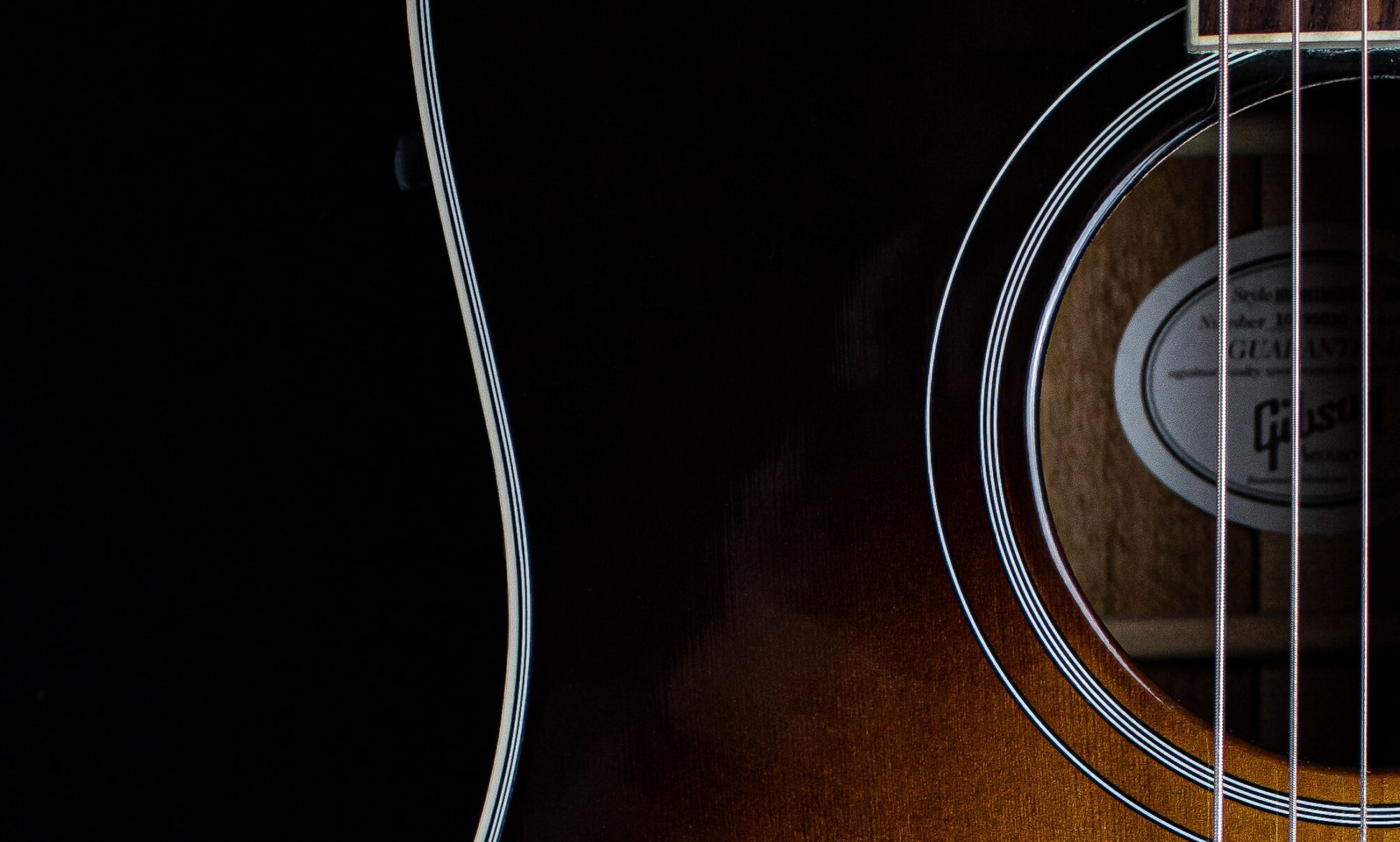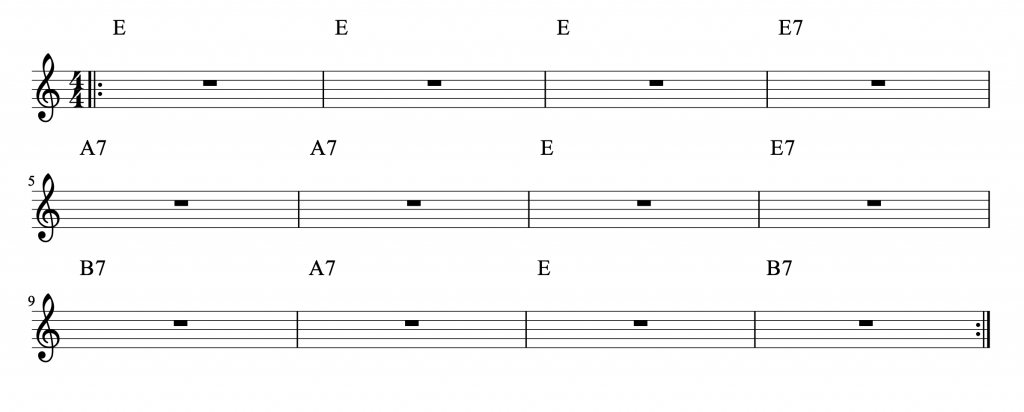This is a practice track for beginning and intermediate players to play along with. It is in a basic folk rock style, but can be used by people interested in country or rock as well. You can use the track in several ways.
The chords are
||: C | |G | : ||
Firstly, try and strum along to the rhythm guitar, and secondly, practice playing your own solos over the rhythm track. The rhythm guitar is panned a little to the left, with a second guitar strumming a chord every two bars panned just to the right. There are two basic rhythms, with occasional variations. For the first 16 bars, the strum used is predominantly:
The strum then changes to the following for 16 bars:
 The two strums then alternate each 16 bars. Note that palm muting is used to stop the strings from ringing out excessively!
The two strums then alternate each 16 bars. Note that palm muting is used to stop the strings from ringing out excessively!
The second way you can use this practice track is to practice your soloing. Use the C major scale as your starting point. This will give a basic folk rock sound. Introducing a Bb over the C chord will generate a more bluesy sound (the b7). The blues sound can be further enhanced by introducing an Eb (the b3) which can be bent partly or all the way to an E. You may also like to experiment with the C and G major pentatonic scales, over the C and G chords respectively, which will give a more country sound. Then try the C minor pentatonic scale, which will give a harder rock or blues sound.
Free MP3 Download: C&G7 practice track
Have fun!


